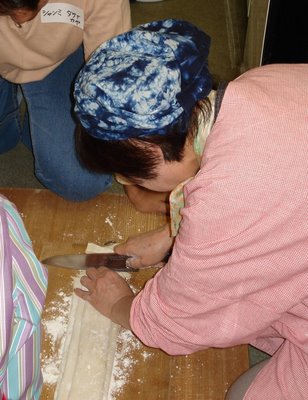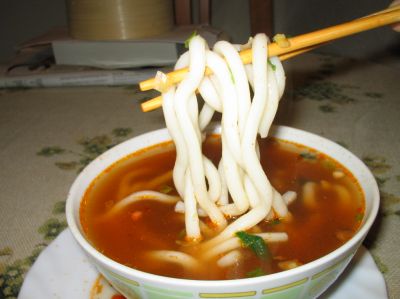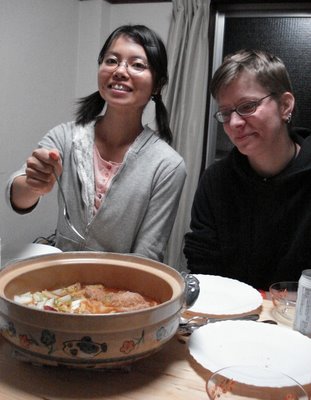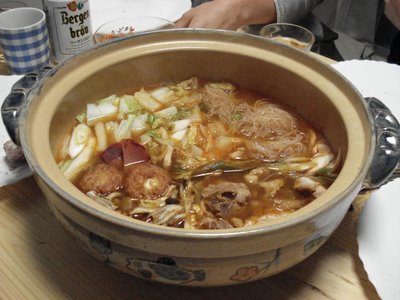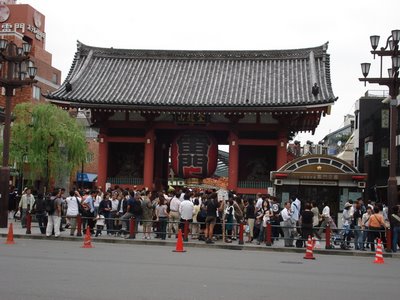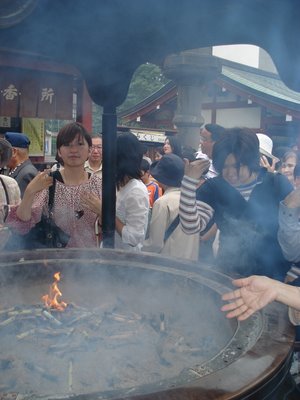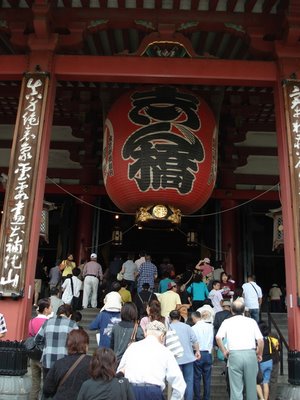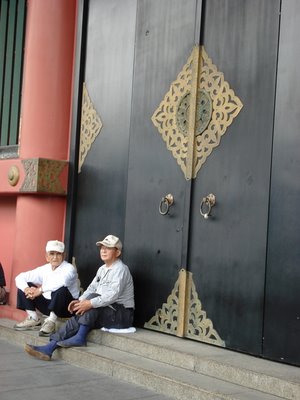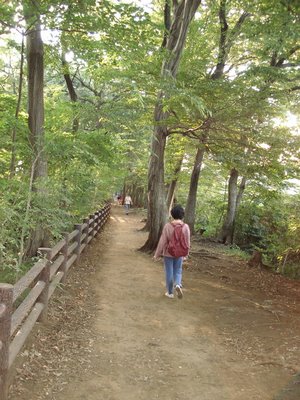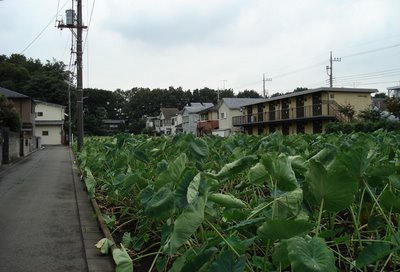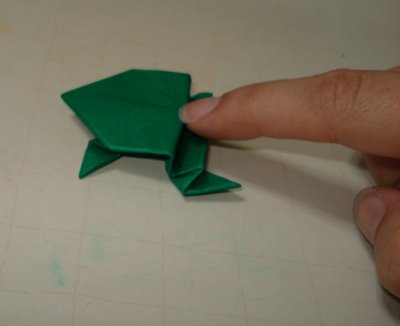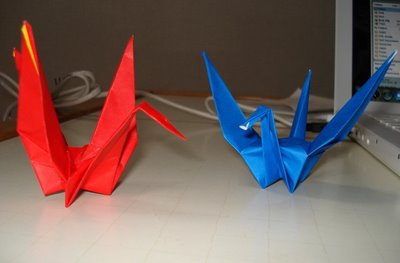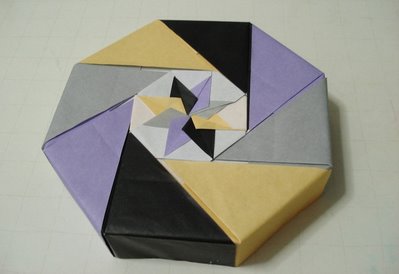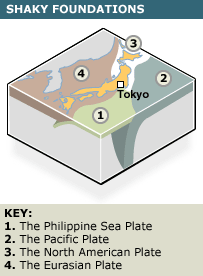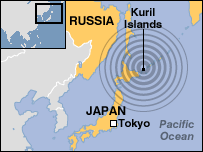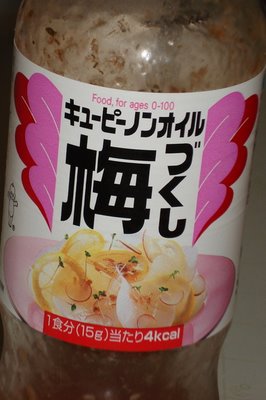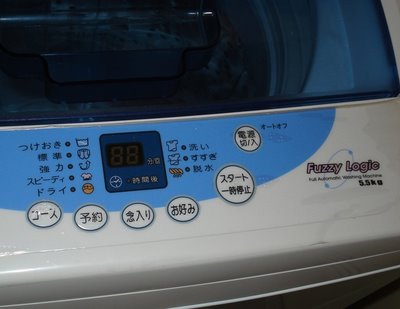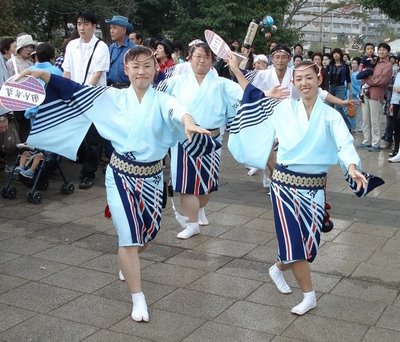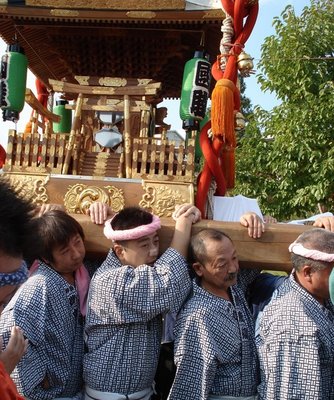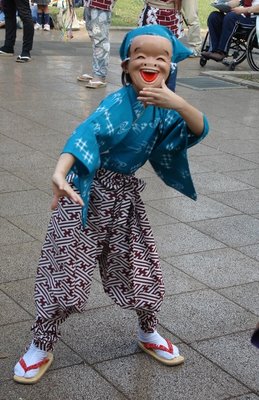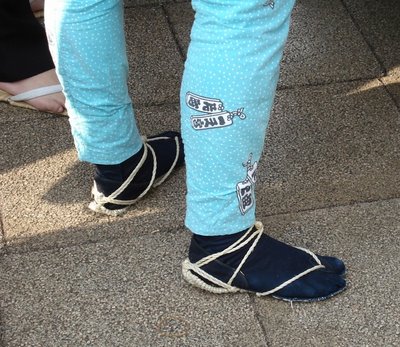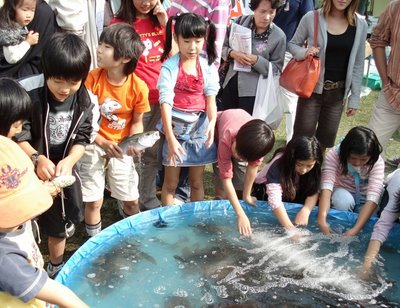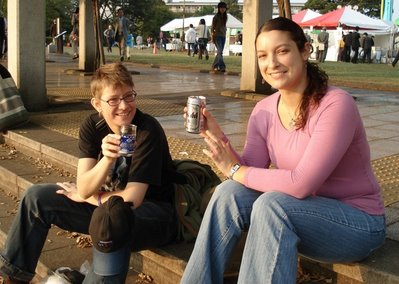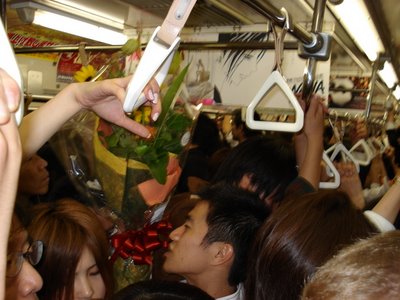Ive realized that I have yet to talk about what I'm really in Japan for - to TEACH! I've been teaching at what is known as an 'eikaiwa', or conversation school. All Japanese students get six years of English instruction in their schools, yet everyone sends their kids to eikaiwas for extra practice. And I can say that teaching has certainly opened my eyes to various aspects of Japanese society, both good and bad.
My only kindergarten class is a real trip. It took me a few weeks to figure out exactly what to do with three little girls! Now I know to just play with them for a while, let them go crazy, and then when they've spent some energy, focus on a lesson, which is usually teaching a set of words. For example, if we do 'D', they learn 'desk, dog, dinosaur', then practice writing the words, and counting. The tiny one, Aika, is only 3, and I can't imagine why her mom brings her to English class. A lot of the time, the moms are rich, bored housewives who like boasting that their toddler is learning English. Hey, whatever makes them happy!
The kids come for group classes, and they are a lot of fun because you can play loads of games with them. My favorite game is 'karuta', where you have these flashcards with pictures of vocabulary, and you lay them on the table, and give the kids fly swatters, and then you call out, 'crayon!' and they have to smack the picture of a crayon. Kids seem to be competitive by nature, so games are good. Plus they have short attention spans, so I don't expect them to sit and study for 50 minutes straight. Sometimes the kids are really sweet. Sometimes they are sort of rude. Sometimes they are kind of nasty and snotty and gross and pick their noses! I wash my hands after these classes.
After the kids come the young teens, which are my least favorite, and most difficult students. And this is where the scary part of Japanese society rears its ugly head. There is a massive difference between kids who are ten and kids who are 13 because when they finish junior high, and move into high school, the pressure begins. In Japanese society, there is immense pressure to conform, yet to also be better than everyone else. Parents make their kids join every possibly club, send them to extra lessons and 'cram schools', and force them to study until 9 pm every night. It is a very competitive system, and going to the right university is very important because if you fail to get into a good university, your life is ruined and you are doomed to a life of mediocrity.
Because of the competition, bullying is a major problem in high schools, leading to a high suicide rate. In fact Japan has one of the highest suicide rates in the world, and not only in teenagers. It is morbid, but true, that 'salarymen' often cave under the pressure and throw themselves in front of a speeding train. Or if you are disgraced in your job, or there is some kind of scandal, people often hang themselves rather than deal with the social shame. You read about suicide in the papers ALL the time. I tell you, flowing just under the surface of this shiny, happy, perfect little society is a very dark, scary undercurrent.
There is a saying in Japan -- 'The nail that sticks up gets hammered down'. As a direct result of all this social pressure, Japanese youth go from being happy, laughing, silly, normal kids, to being sullen, scared, insecure, paranoid young teens. They refuse to talk in class out of fear of embarrassing themselves in front of their peers. If I ask them to read something, and they come across a word they don't know, they don't try to piece it together. Rather, they stop mid sentence, and look up at me with these big, sad, doe-eyes, and I can see it in their face, inwardly they are pleading, 'PLEASE, PLEASE, PLEASE tell me how to say this word. PLEASE.' I often get frustrated with this age group because I know that they could do it if they try. But when I get frustrated, I remind myself that their academic day starts at 8 am and ends at 9 pm, that they are tired, and are under a lot of pressure at home and in school. Poor things.
Somehow, these pre-teens survive this difficult time in their life, and sometimes blossom into really cool young adults. The older teenagers are surprisingly easy to teach. The students between the ages of 16 and 19 are great, I really enjoy teaching them. We can do a lesson on any and every topic, and they have lots of ideas, opinions, and varying beliefs, and most of all, they have a good level of English, so they aren't afraid to express themselves. Sometimes I am really impressed by their vocabulary and the way they form an argument or state a position.
Then I have the adults who come for one-on-one lessons. They are usually between the ages of 25 and 55, and come from various walks of life - doctors, nurses, grocery workers. Some are what are known as 'Hobby Housewives' who learn English for fun. Some are young professionals, and some just like to travel. Teaching adults is a breeze, as most of the time they just want to chat with you and practice the English they already know, and pick up some new English along the way. They are a welcome break from the madness of teaching kids, that is for sure!
Generally the job is going well, and it is teaching me a lot about children, which is something I know NOTHING about. In fact, teaching kids is sort of like training dogs, ha ha! I'm sure that by the time this year is over, I'll have a whole new understanding about the world of kids.



